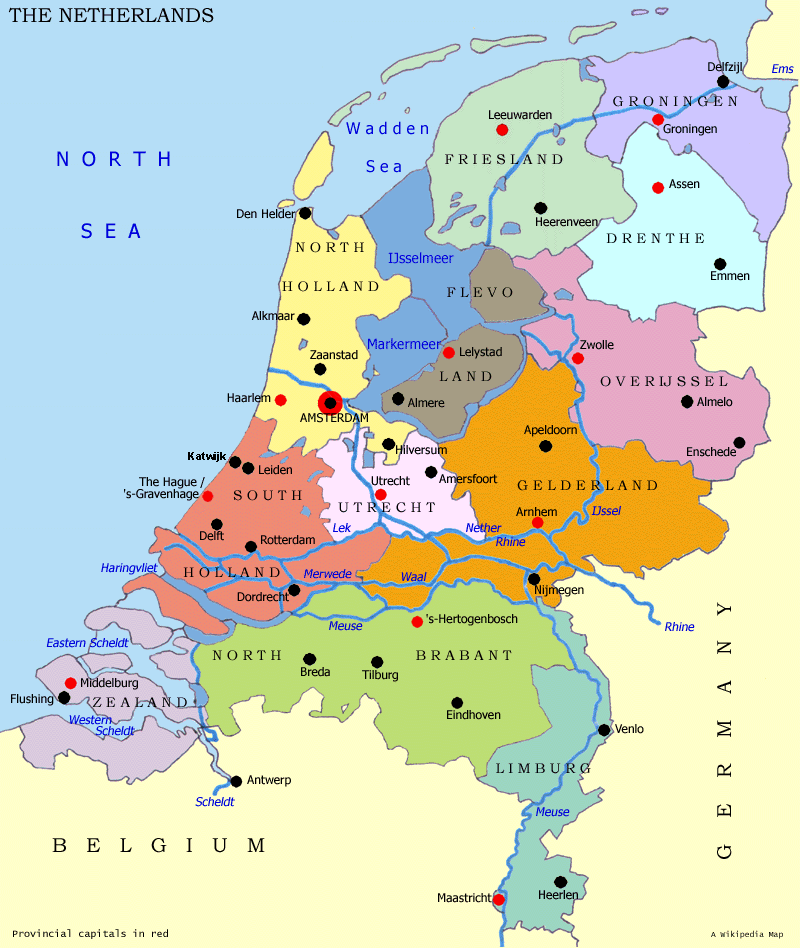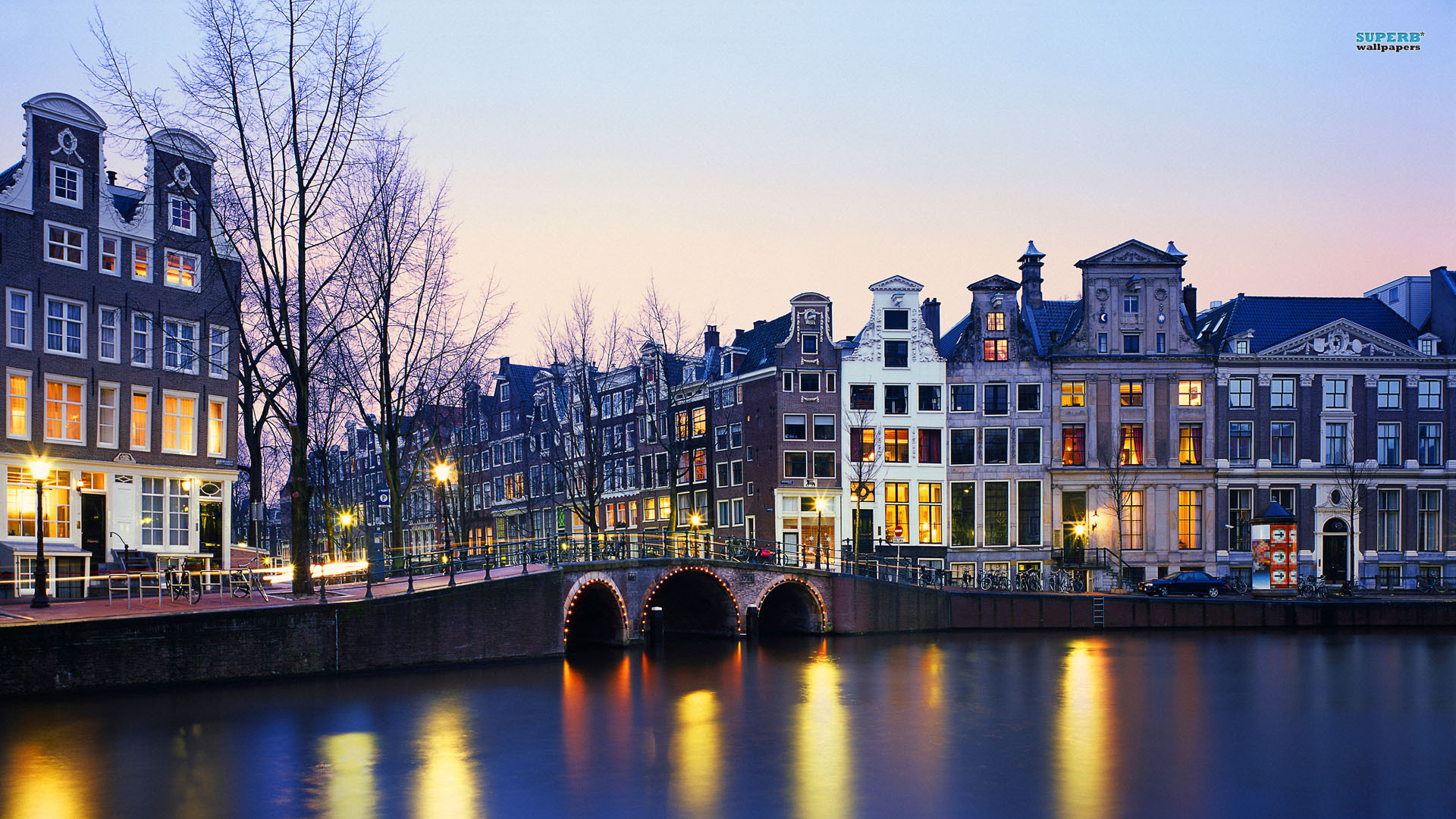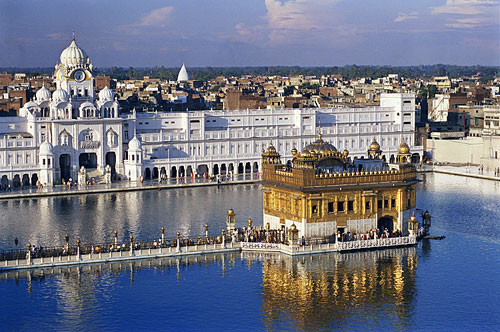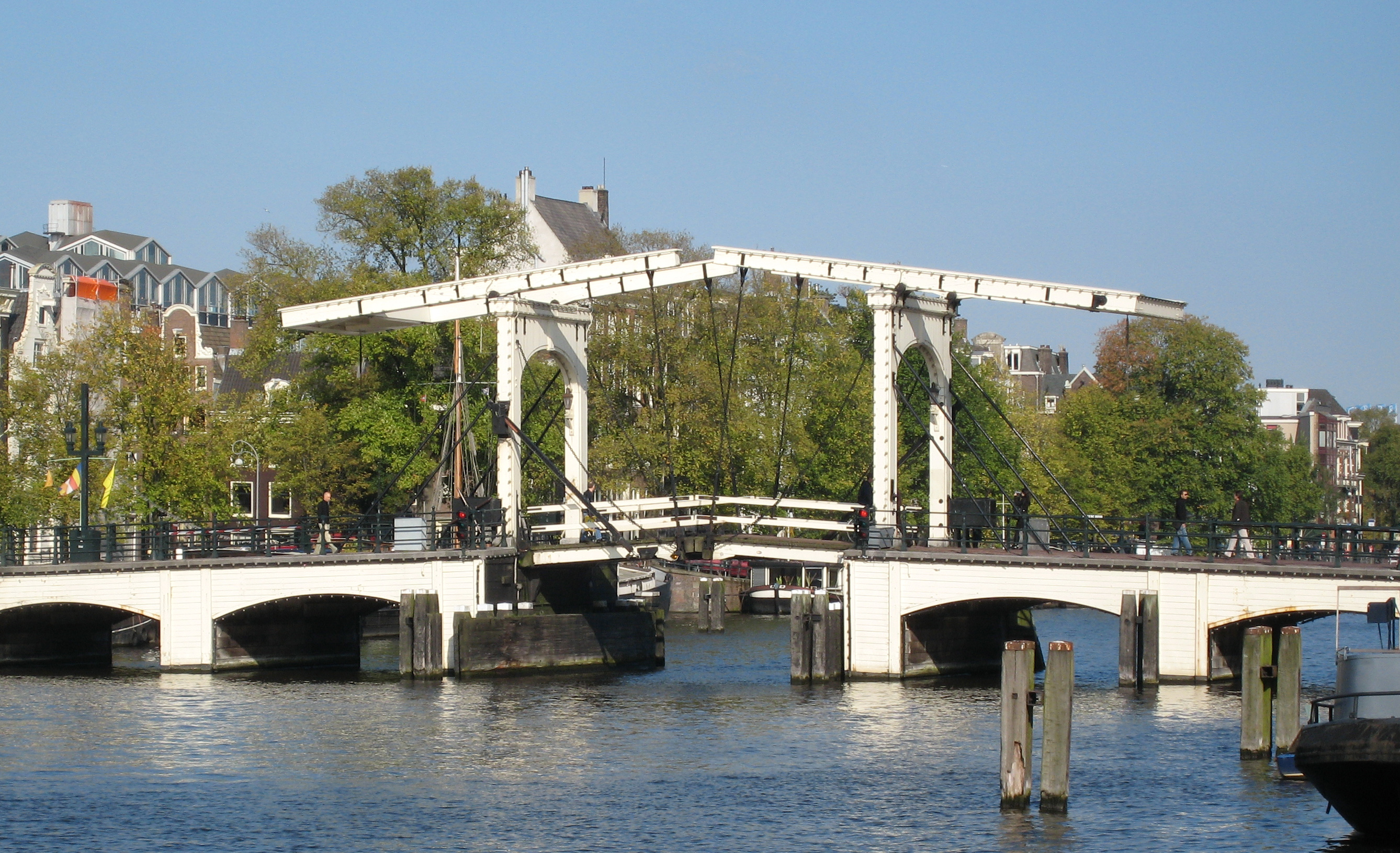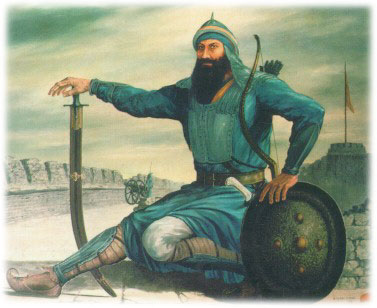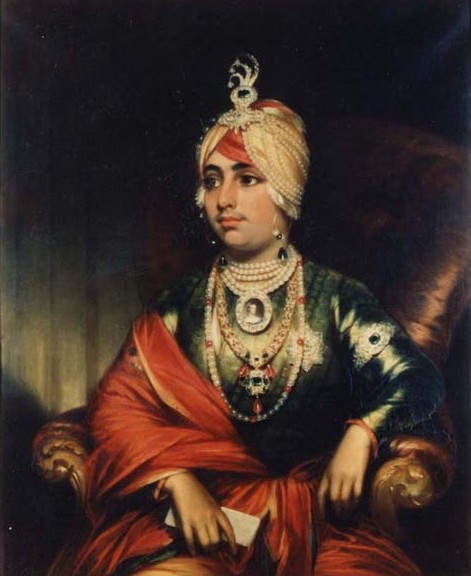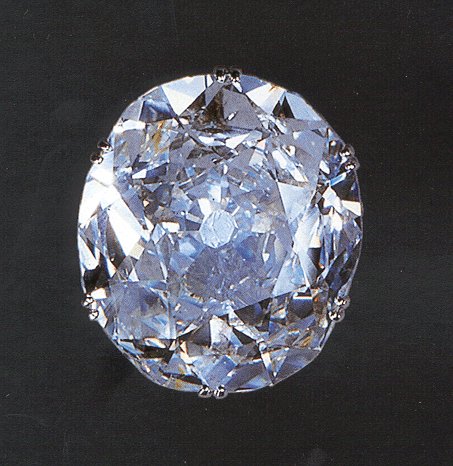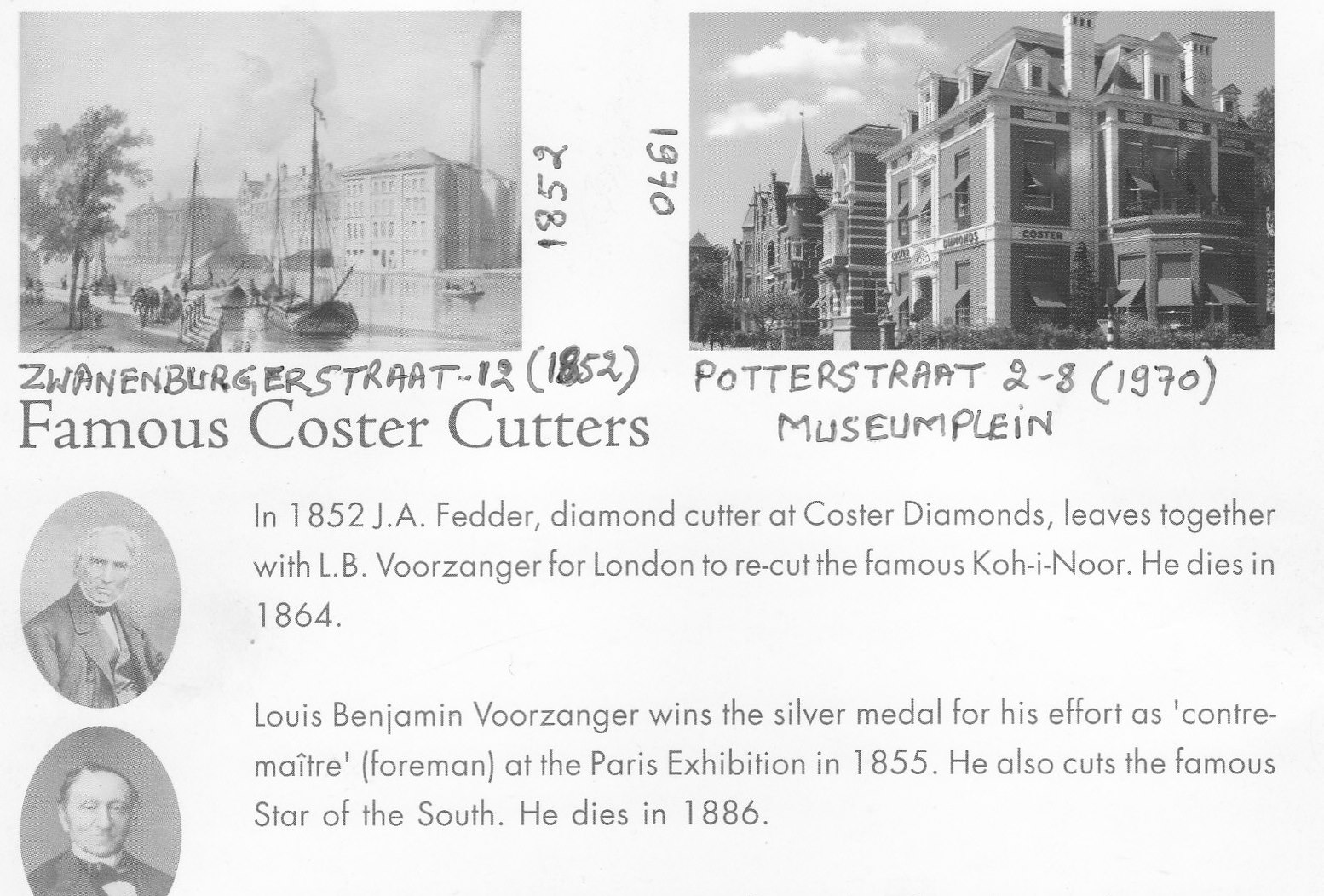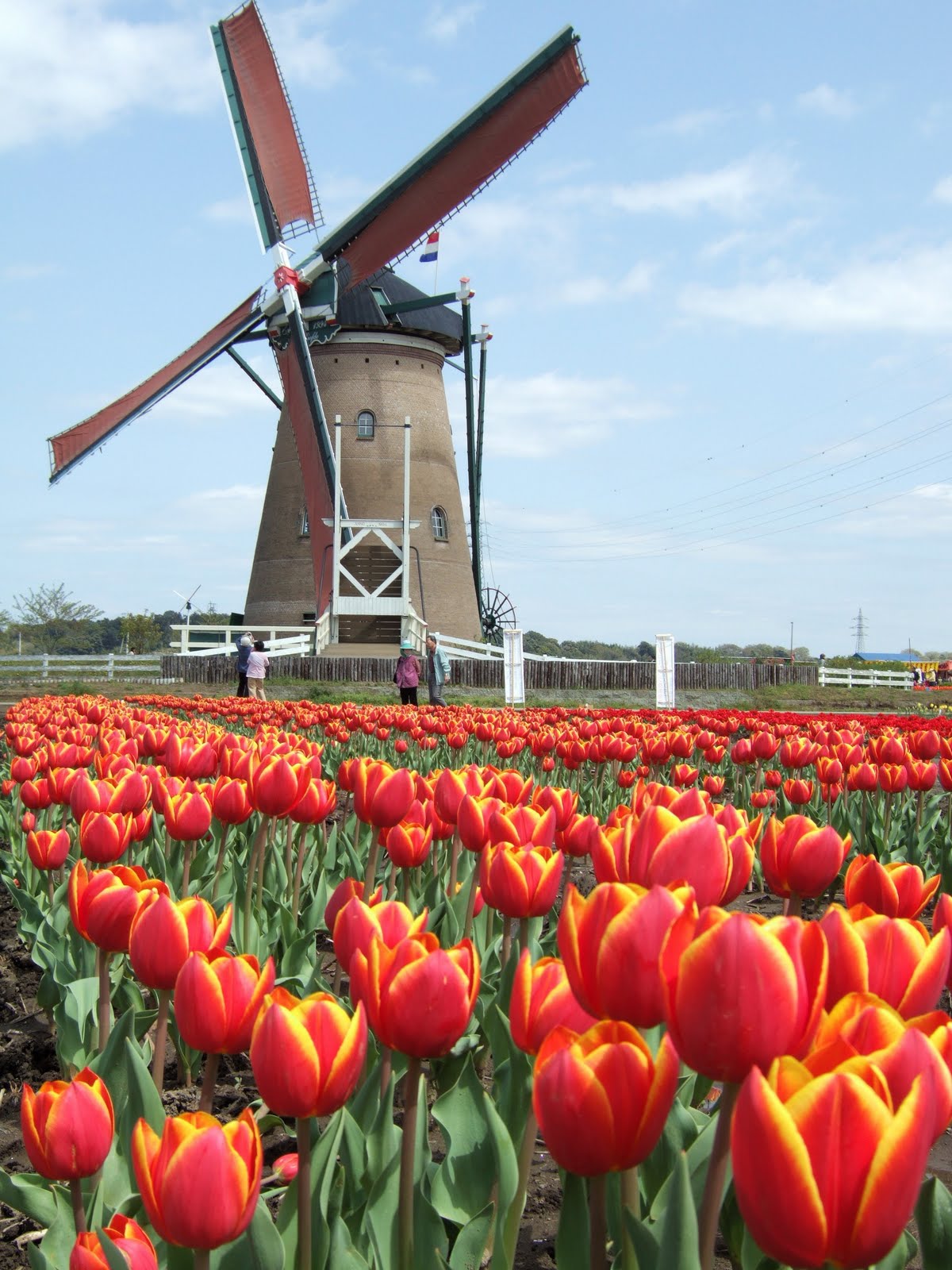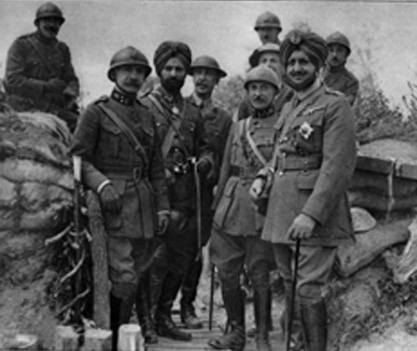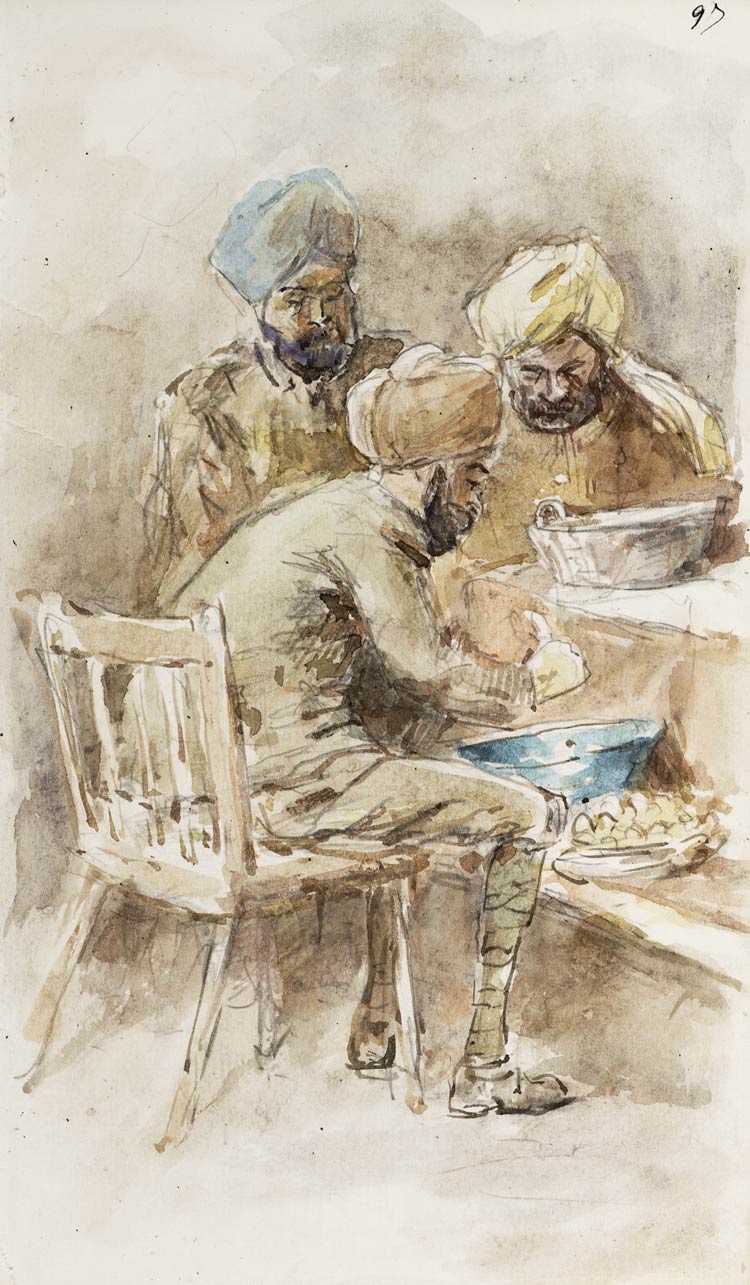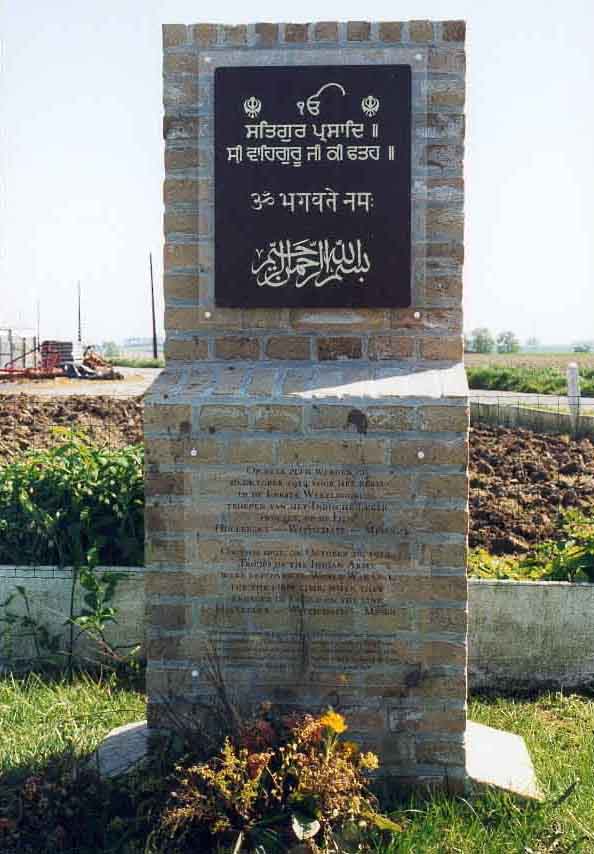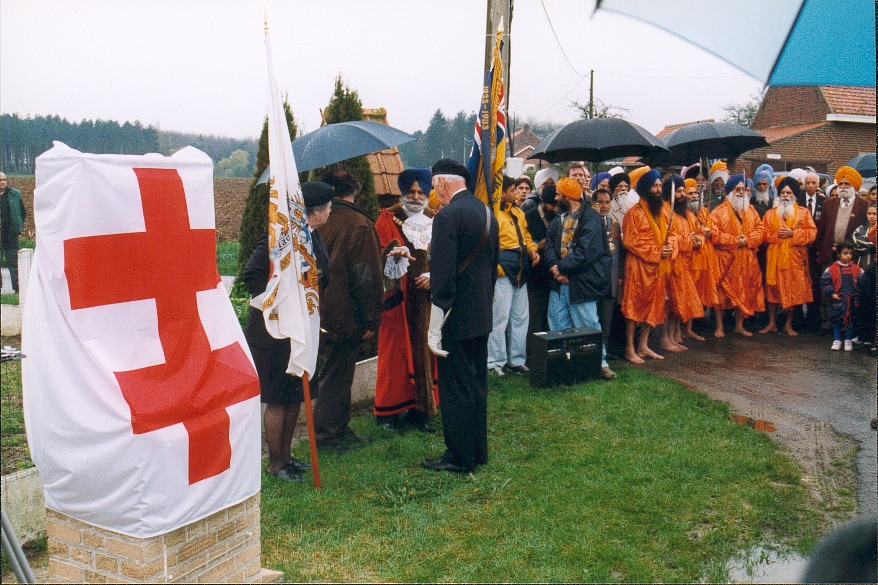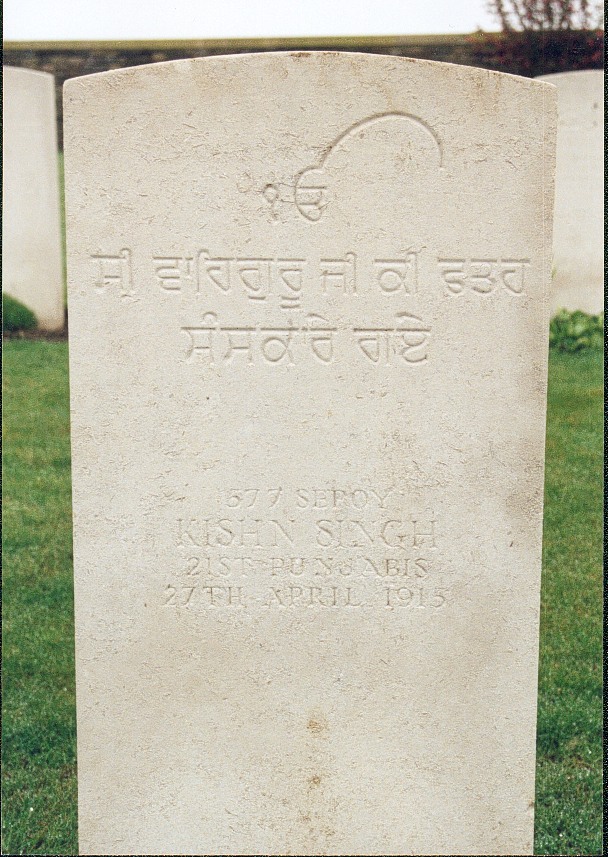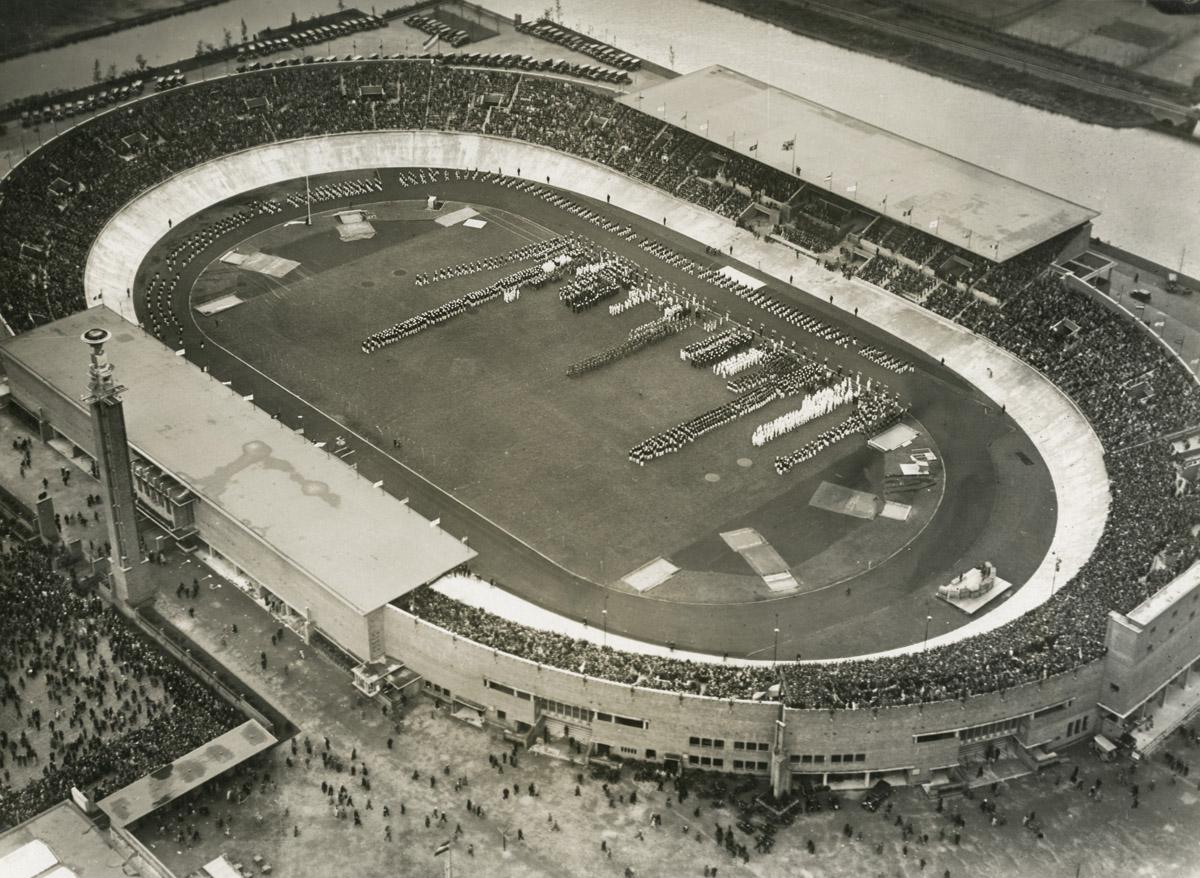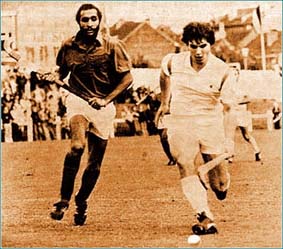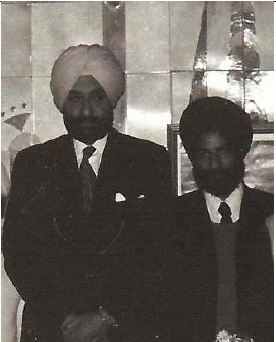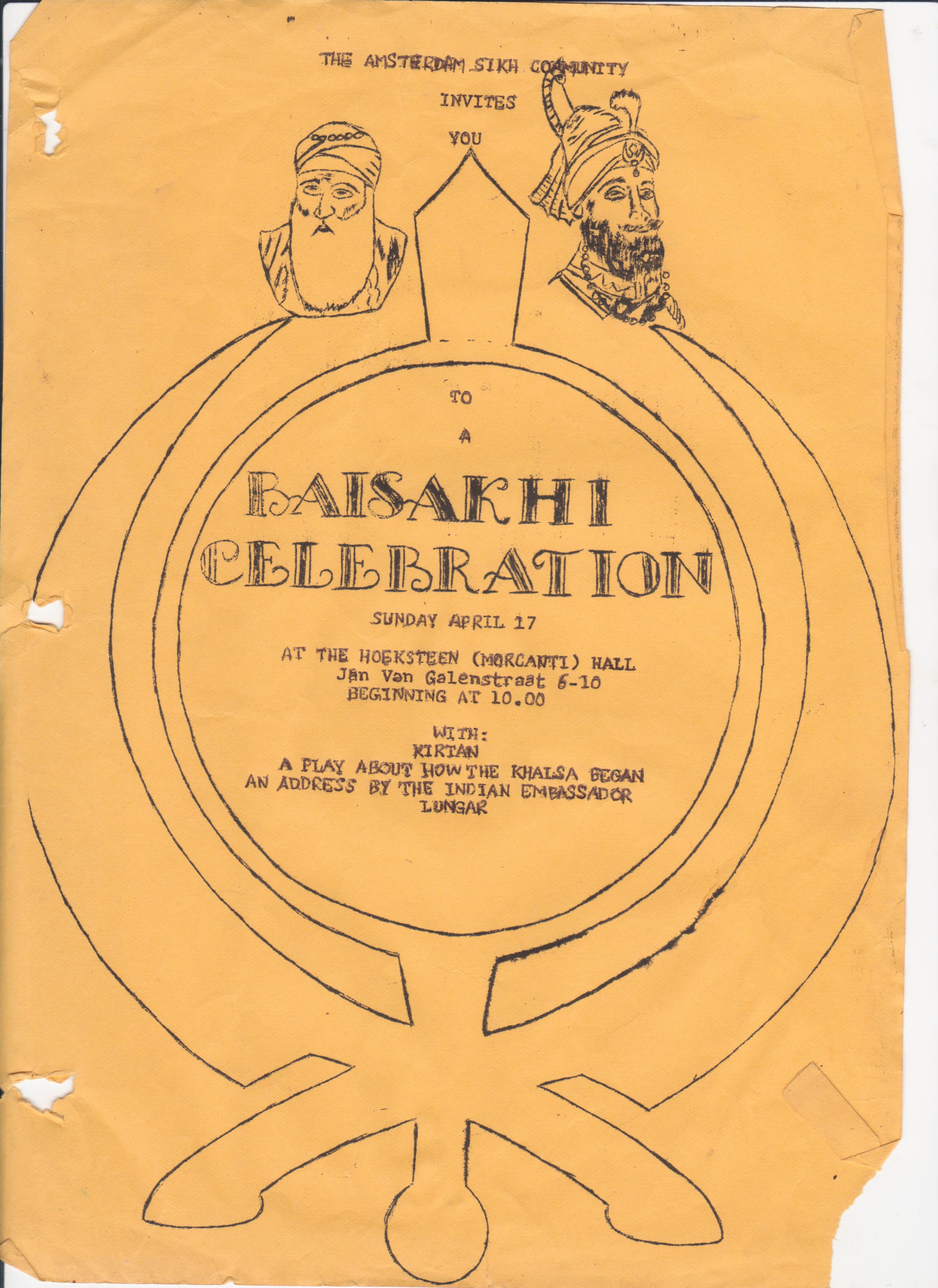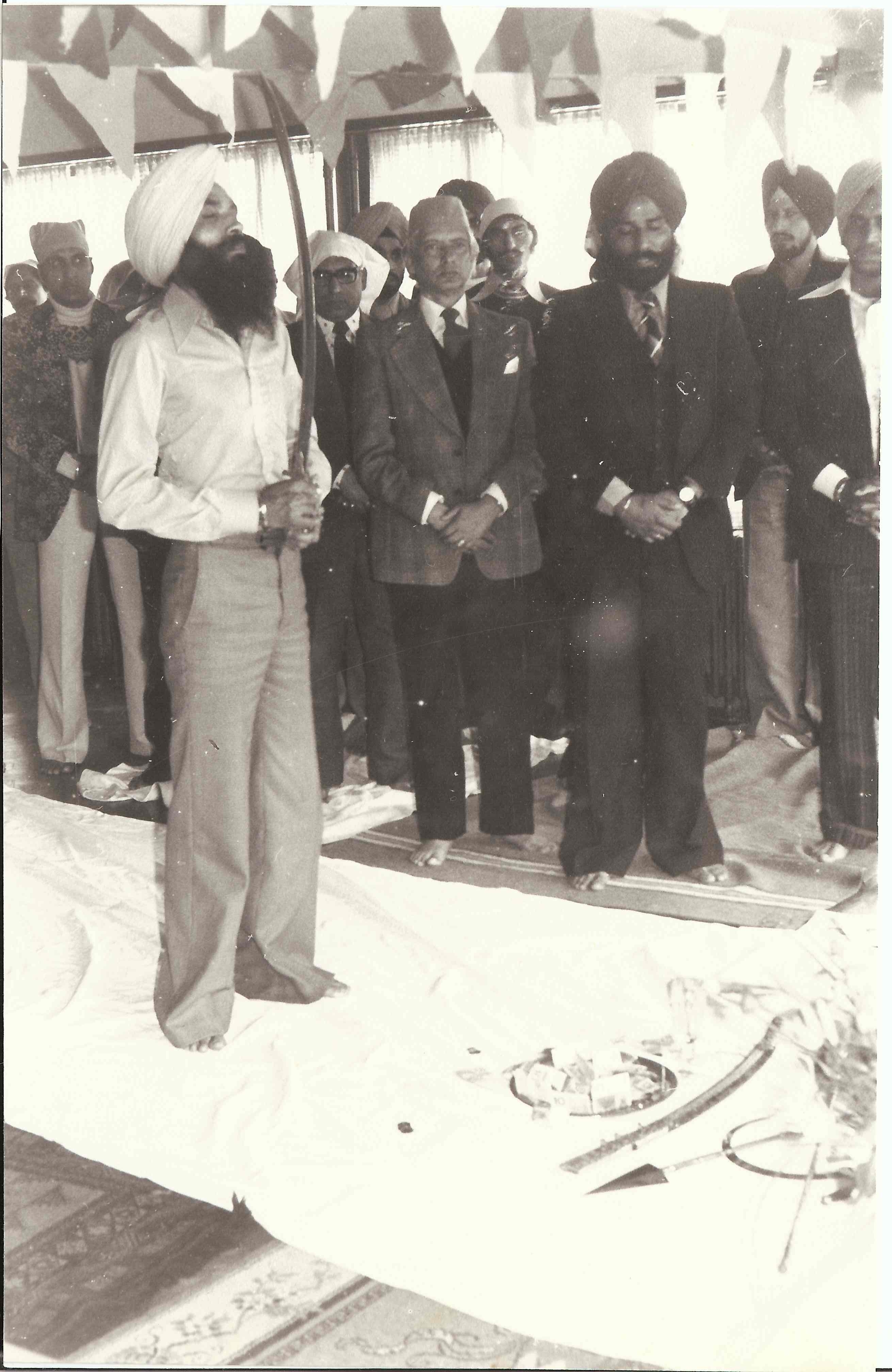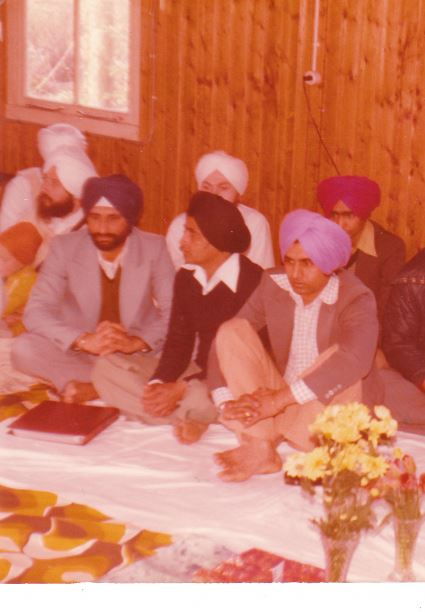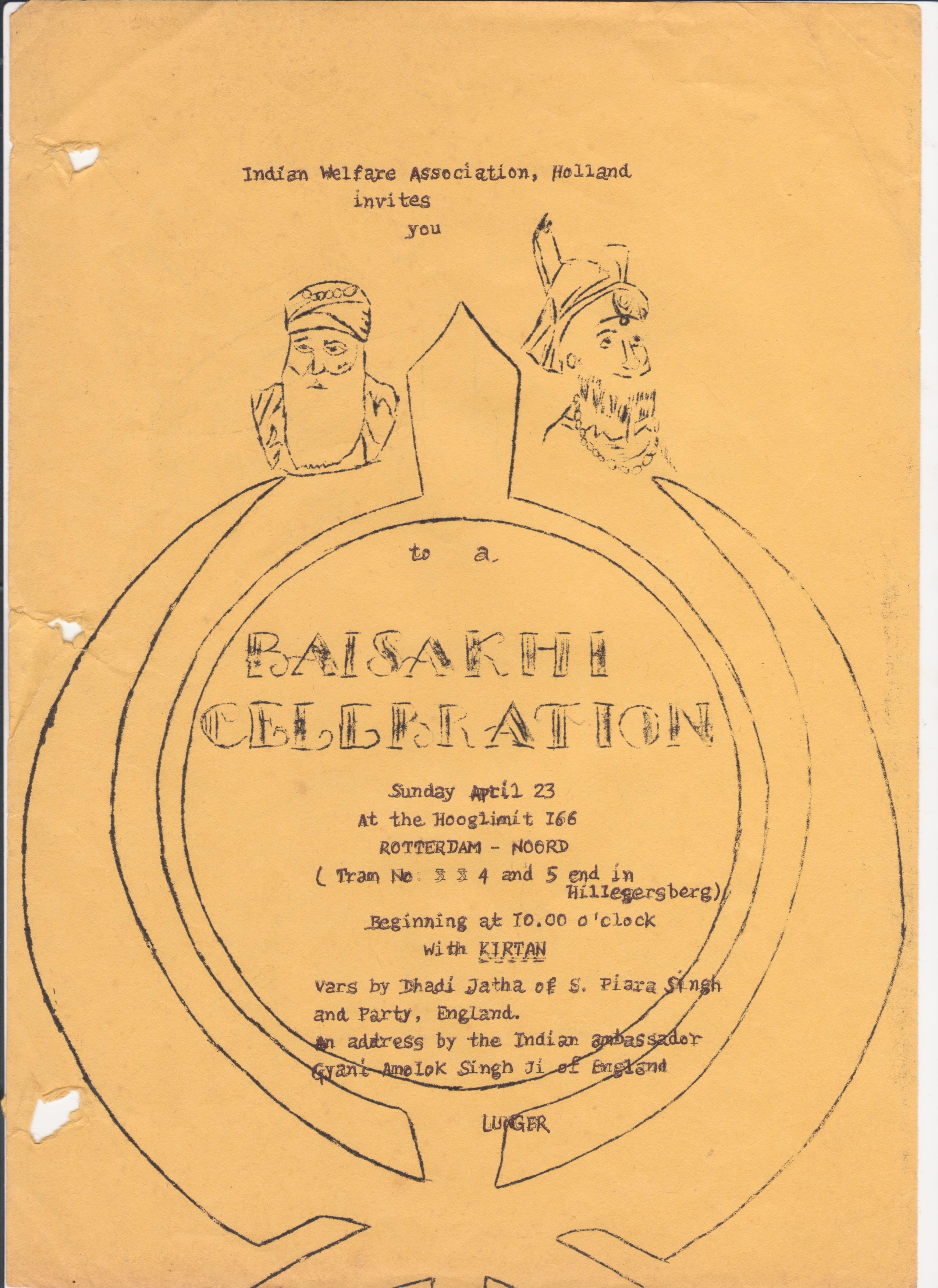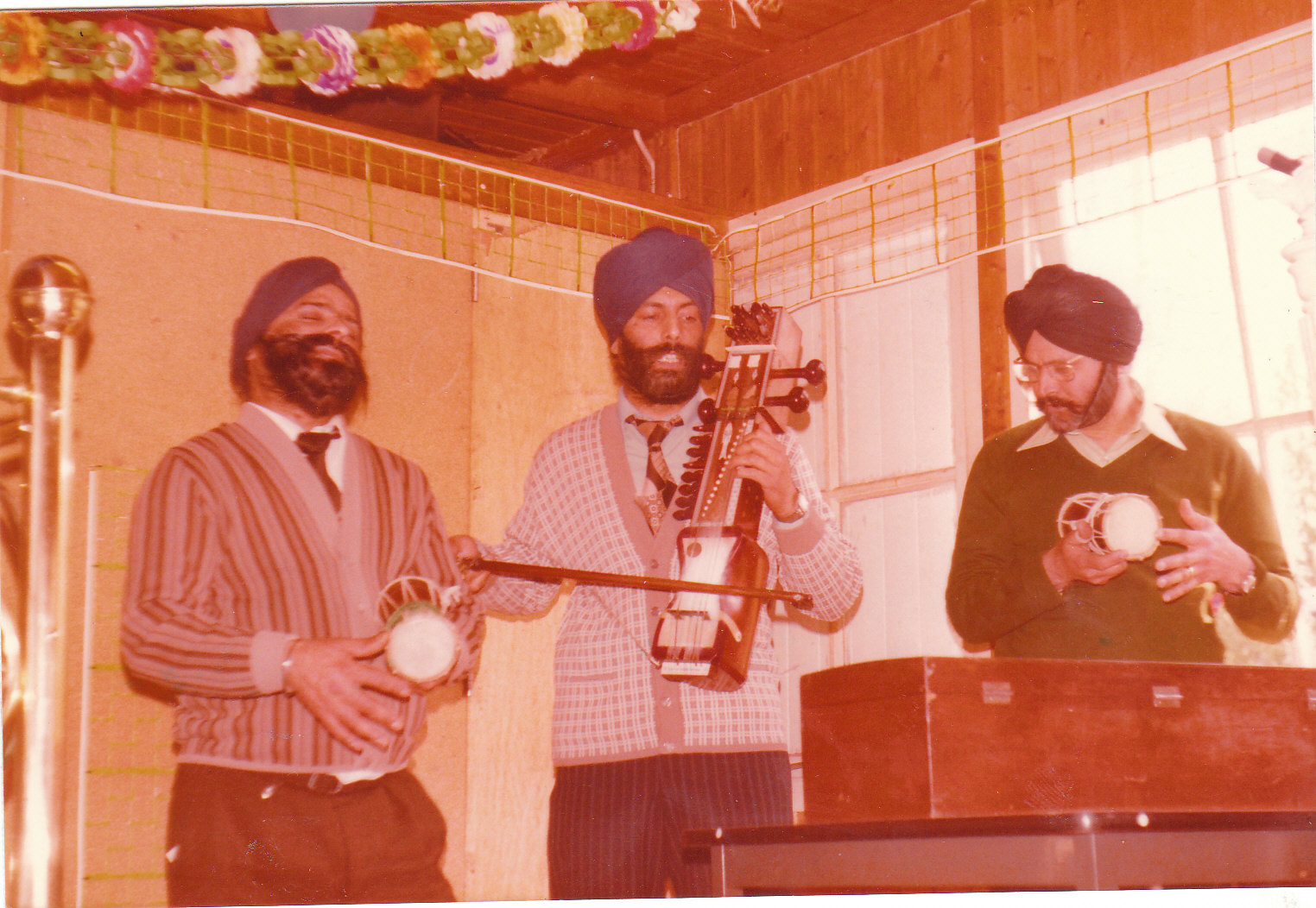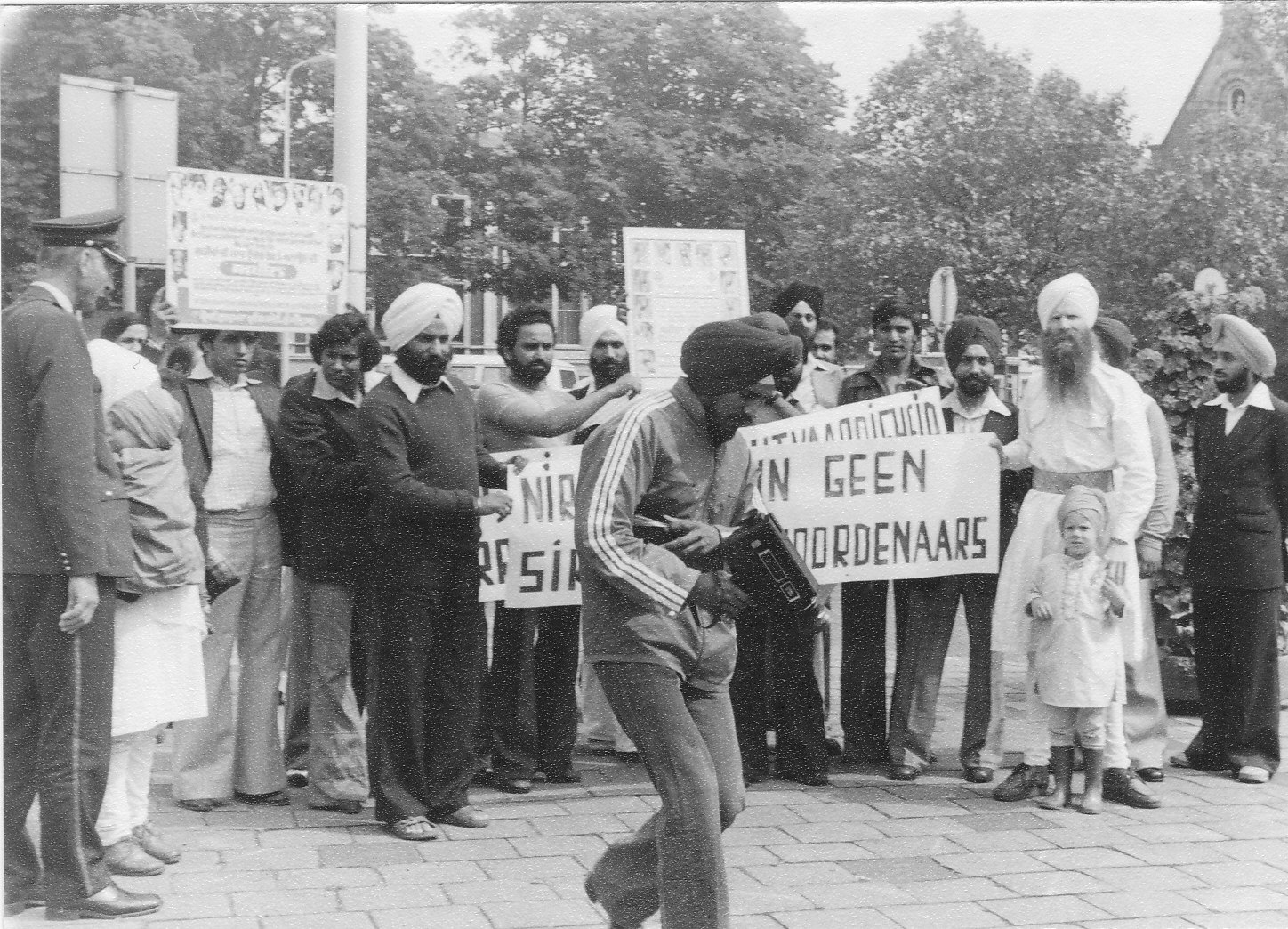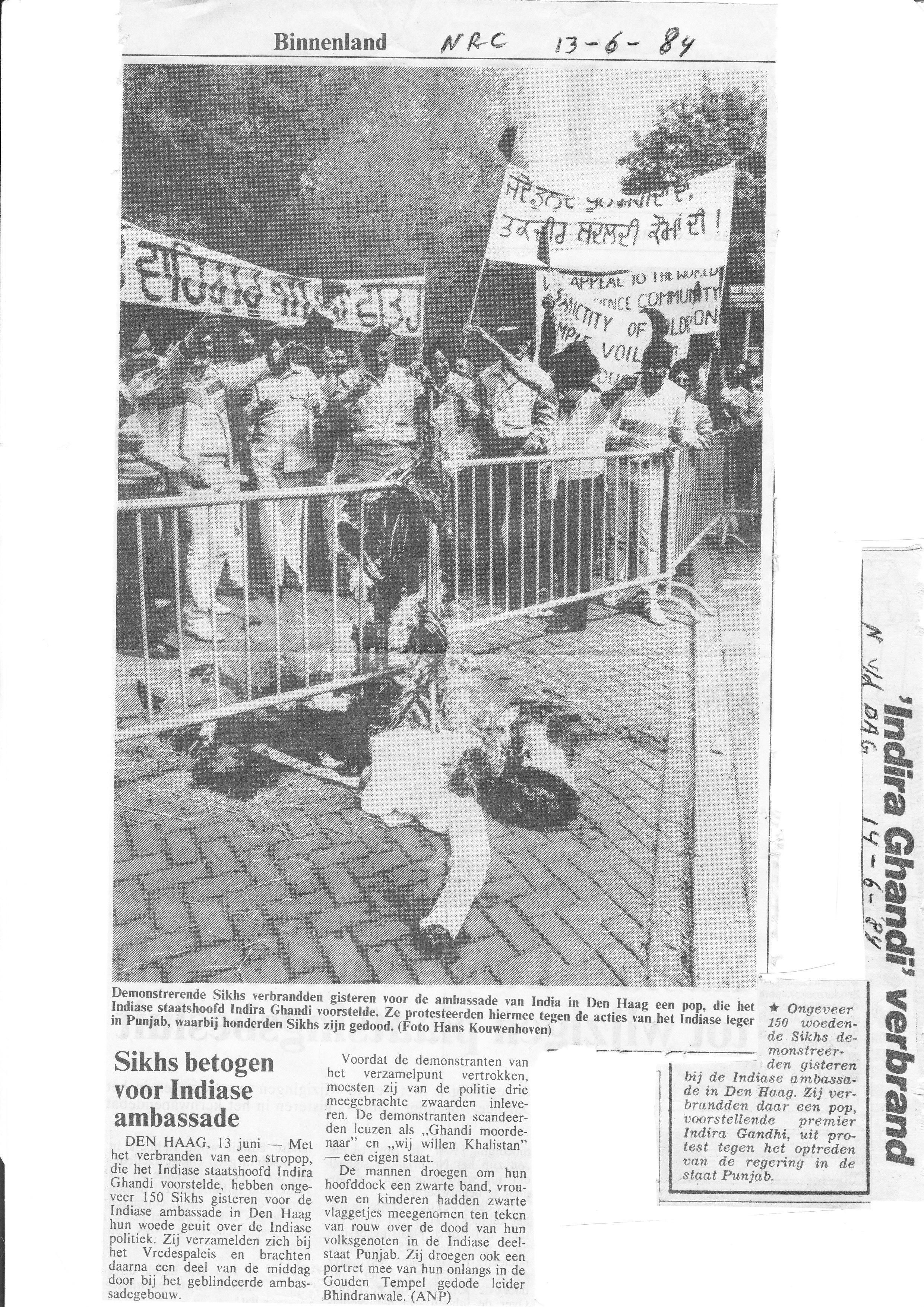Sikhs in the Netherlands - a Brief History
Sikhs in the Netherlands: A Brief History
Bhupinder Singh Holland
A tourist visiting the exotic city of Amsterdam might come across Sikhs who, besides practicing other professions, own most of the over fifty restaurants that serve Indian cuisine. He often inquires about the presence of Sikhs in Holland and their present position. When there are nine Gurdwara's in Holland (Amsterdam 4, Den Haag 3, Rotterdam 1, Almere 1) and since April 1999 on Vaisakhi day- the 3rd centenary of the birth day of the Khalsa, big Nagar Kirtans (City processions) are taking place every year deep into the center of big cities like Amsterdam and Den Haag, one can't miss the presence of these traditional people having their great history. As a moral duty and to keep the history of the Sikhs living in Holland up-to-date, I decided to write this article. Moreover, when you spend 40 years of your life in a country, some love and emotion is bound to develop. Undoubtedly, these sentiments are of a different nature than those associated with Amritsar where besides spending my childhood, getting an education and participating in sports, I had enjoyed the warmth that is so characteristic of that ‘city of the Guru'. There is still no substitute for the visits to the Golden Temple and the other Gurdwara’s and the six years spent at Khalsa College, Amritsar.
In 1975 both Amsterdam and Amritsar celebrated their seventh centenary and quatercentenary respectively, but indescribably in different ways. To celebrate the centenary of Amsterdam, old ships belonging to several countries were sent to the seaport for the people to see. The Mayor received messages and letters of congratulations from several governments and organizations around the world, including the UNO, now preserved as a book in the library of Amsterdam. On the other hand in which library would you see preserved all messages and letters of congratulations sent by the Indian President, Prime Minister, Ministers, Governors and other political leaders etc on the eve of the quatercentenary celebrations of Amritsar and published by the SGPC wherein they had at first paid glowing tributes to the Golden Temple, the Akal Takht, the Sikh Gurus, Sikhs and the citizens of that city and then after a few years destroyed that very place by sending the army that resulted in the death of thousands of innocent devotees.
Sikhs will never forget 1984 though 29 years has passed. For the Genocide of the Sikhs, State sponsored Terrorism was used by the Indian Police, Para Military force and Regular Armed Military Force. The Sikhs all over the World are deeply affected by this well organized Genocide of the Sikhs by the Indian Government. Dutch Sikhs protested against this Genocide while state sponsored Nirankari's, a sect created by the Government of India, killed Sikhs in Amritsar on Vaisakhi Day in April 1978, during attack by the Indian Army on Siri Darbar Sahib, Amritsar - the Central Holy and Spiritual place of the Sikhs in June 1984 and 1988. After the assination of Mrs Indira Gandhi who was responsible of the attack on Golden Temple, thousands of Sikhs including women and children were burnt alive systematicaly and the guilty are Ministers, enjoying high offices in the Government. No justice is done to the Sikhs so far.
In the 720 years' history of Amsterdam, 80 years of slavery under Spain (85 years in the whole of Holland) and the years of the first and the second World Wars may be called the Dark Age. Hitler had captured Jews, the permanent citizens of this city, and got them killed after subjecting them to inhuman torture in the camps of Germany, Poland etc.
Amsterdam is famous for its horticulture, museums, zoological parks, artists, painters, poets, writers, religion, culture, entertainment, precious diamonds and canals, and is itself situated six feet below the sea level. By digging a thirty-five miles long canal to the west, it is connected to the sea. Its existence is known since 1275 when in order to unite the fishermen and traders settled on both banks of the river Amstel, the first bridge was constructed and the banks of the river were reinforced.
History is silent about those fishermen and traders as to who they were and when did they settle here. Gradually, the small and big sea boats started sailing to Hamburg (Germany) and to the Scandinavian countries bringing wood, wheat etc on its return journey and Amsterdam developed trade links with northern Europe.
When Spain conquered the famous city of Belgium Antwerp at the end of the 16th century, which was known for its diamond-dealers, several traders left Antwerp and settled in Amsterdam. Since then Amsterdam became a market for diamonds. This city enjoys the honor of cutting the world’s biggest diamond, the Cullinam Diamond.
The task of cutting the Koh-I-Noor, the diamond (186 carats) of Ranjit Singh, Maharaja of the Sikh empire and Maharaja Duleep Singh, the last Sikh Maharaja of the Punjab, was accomplished in London at Panton Street on 17th July 1852 by de heer Louis Benjamin Voorzanger and de heer J. A. Fedder of Firma M.E. Costar Diamond of Amsterdam at Zwanenburgerstraat 12, (Watrerlooplein) and now situated at Paulus Potterstraat 2-8, 1071 CZ, Amsterdam (Museumplein since 1970). The cutting took 38 days and Koh-I-Noor was reduced to 108.93 carats. De Amsterdamsche Courant of July 23, 1852 wrote, ‘At the workshop of Garrard’s of London, the Crown jewelers on Panton Street, the cutting began on Friday of the giant Koh-I-Noor diamond…The Coster diamond-cutter of Amsterdam have been commissioned to do the fine work, which is to require several months.
Queen Victoria continued to wear it as an ornament. In 1911, the jewel was used in a crown made for Queen Mary. In addition, the City has also the honor of cutting the world's smallest diamond 00012 carat and making its fifty-seven facets.
During this period Jews from Portugal also started living here. New markets developed. Three canals - Heren, Keizer and Prinsen - were dug and magnificent houses and building were constructed on its sides. Even today the city's elite live here. Because of a great influx of immigrants the area of Jordaan, Rosen street was developed. Although the world-famous painter Rembrandt was born in the city of Leiden in Holland, he settled in Amsterdam in 1639. It was here that he painted The Night Watch. Most buildings known for their architectural beauty were built in the 16th, 17th and 18th centuries.
The Siri Guru Nanak Dev Gurdwara was situated near the most prominent market of the City Albert Cuijp (center). In the ‘90s it was renovated at the cost of Rs. 1.8 million and a beautifully palanquin was installed. Now this Gurdwara has been shifted to the west of Amsterdam near Sloterdijk station and has been officially inaugurated on 23 October 2005. One attraction worth visiting is the windmills. A windmill is a huge fan with blades (sails) mounted on a tower and works with wind. The flour-mill, the oil-mill and energy-operated machines are run by it. It is an invention of the seventeenth century. Since Amsterdam is situated below sea level, naturally very strong winds blow here. The energy generated was then used for irrigation purpose. Once, in Amsterdam and its vicinity, there were about one hundred windmills. Now only three have been preserved, which are mainly a tourist attraction. The windmills are also the national symbol of Holland.
The city has twenty parks. The largest is the Vondal Park named after the famous Dutch poet Vondal (1587-1687). He was born and also died in Amsterdam. Prof. Puran Singh can be easily compared with Vondal's open poetry.
Besides being famous for its canals and architecture, for Sikhs it has another importance – the local masands. By Masands I mean those people who, despite being Sikhs, do not regard Sikhs as their own, instead hate other Sikhs. A separate article can be written on this issue. One example will be given at the end of the article.
Amsterdam has a network of about one hundred canals which are linked with one another. These canals have 850 bridges and many of them are the jack-knife bridges, which are raised to let the boats pass and then are lowered. An hour long cruise on the boat is available for visitors to enjoy and appreciate the beauty of this magnificent city.
There is mentioned in the book of Mr. William Irvin, "The Later Moguls" at page 147-154 that the Dutch Ambassador of Dutch East India Company Mr. John Josua Ketelaar was trying to meet the Mughal emperor Bahadur Shah at Lahore (Punjab) since December 1711 for the grant of some business concessions. He succeeded to meet Mughal emperor on 16 February 1712 and got some concessions for Dutch east India Company. At that time, the Sikhs under the leadership of Baba Banda Singh Bahadur appointed by tenth master Guru Gobind Singh Ji as the leader of the Sikhs were having a great revolt against the Moguls and were conquering cities after cities in the west of Delhi (Punjab). Bahadur Shah remained in Lahore to crush the Sikh rebellion but failed miserably, became very sick and died in Lahore in February 1712.
During the mid-eighteenth century, when the Sikh missals’ were staking their lives to oust the Ahmad Shah Durrani and Mughal armies from Punjab, exactly at that time Holland was also, like England, France and Portugal, trying to establish a foothold in the south of India. The Sikhs, however, with their firm faith and determination, succeeded in establishing their empire from Sutlej River up To Afghanistan by the end of the century under the leadership of Maharaja Ranjit Singh, but Holland having failed in India, left the sub-continent and gained control over Indonesia. No information is available about the Sikhs' familiarity with the Dutch people at that time. Punjabi word Duse is meant for a healthy man with big chest, well built body and over 6 feet of height. I have a strong felling that this word Duse is a substitute for a Dutch man.
The record of sacrifices made by Sikh soldiers for the freedom of mankind during the First World War (1914-1918) in Europe including France, Belgium, Germany and Italy etc is available, but no such record has been found so far about Holland. Otherwise too, Holland had remained neutral in the war. But fortunate enough that I have found drawing sketches of the Sikh soldiers made by Jan Hoynck van Papendrecht. Sikhs had lived in the refugee camps in Firmly Hall, Den Haag, Harderwijk, Zeist, and Bergen. These paintings are preserved in the Army Museum, ( Leger Museum ) Korte Geer 1, 2611 CA, Delft.
In The city of Neuve Chappell in France has a memorial erected in memory of thousands of Sikh soldiers who laid their lives in the war. In France and Belgium, there are tombs of thousands of Sikh soldiers on which are inscribed the words Ek Onkaar Siri Waheguru Ji ki Fateh Sanskare Gaye in Gurmukhi. Similarly at Menon Gate in Ypres, a city in Belgium, hundreds of Sikh soldiers have been commemorated on the walls. In Hollebeke - Belgium, a monument has been built by the Belgian Government and European Sikh Community in memory of Sikh soldiers. This monument has been unveiled by Panj Piara’s (the five beloved Sikhs) on 3 April 1999 dedicated to the 300 years revelation of the Khalsa in 1699 by Guru Gobind Singh, the tenth Guru of the Sikhs.
In about 14 months, the British Indian army had lost at least 34,252 men (dead, wounded, ill or prisoners of war) mostly Sikhs on the western front in France and Belgium. There are already two books by this author on this subject, “How Europe is Indebted to the Sikhs - Role of Sikhs in Europe during World War 1 and II and has been published by Sikh University Press Belgium in 2005 and 2007 respectively. “Dutch Sikhs – A Brief History was written in 2009. Recently, author has written a complete book of 1737 pages on “Sikhs in World War I” highlighting the Important role of Sikhs in 4 Continents namely Europe, Middle East, Africa and Asia, published by Wisdom Collection – an imprint of GS Distribution Inc. Ludhiana, released by SGPC President S. Awtar Singh Makkar at Ramgarhia Girls College, Ludhiana on 14-08-2013 and by Gurdwara Maan Sarovar Sahib, Amsterdam on 22-09-2013.
It is important to note that in 1928, first Olympic Games were held in Amsterdam where Hockey Olympic title was won by Indian team with Captain Jaipal Singh. Kehar Singh Gill played very well. India defeated Australia by 6,0; Belgium by 9,0; Denmark by 5,0; Switzerland by 5,0; and Holland in the final by 3,0. India remained Olympic champion from 1928 till 1960. Till today, Indian Hockey team with many world known Sikh players like Ajit Pal Singh, Surjit Singh, Pargat Singh, Rajinder Singh, Surinder Singh Sodhi, Baljit Singh, Jagbir Singh, Gagan Ajit Singh and many more has visited Holland and played in World Hockey Cup and Champions Trophy at Wegenaar Stadium in Amstelveen.
The first contact of the Sikhs with Holland took place during World War II (1939--45) when, at the request of the Dutch government, the British had sent Sikhs and the Gorkhas soldiers to Indonesia to fight against Japan. While the Sikhs and the Gorkhas together defended Indonesia, they also displayed exemplary bravery to make the Dutch people reach Holland safely immediately after the war when Indonesia got independence. This was also revealed and confirmed by a Dutch lady, who was 12 years old at the time of war in Indonesia, to a Sikh delegation of twenty Sikhs who went to National Monument at Dam Square, Amsterdam to pay tribute to all the soldiers, especially to the Sikh soldiers of WW2 for the 1st time on 4 May 1999. She said,” I am alive because of the Sikh soldiers who saved me, my family and many others in Indonesia and today I am glad to see you (Sikhs) at the right place, Dam Square.” This moved everybody and reminded the great sacrifices of our forefathers given for the freedom of mankind.
In Holland the Sikh armies along with the British forces had marched through Eindhoven, Nijmegen, Rhine to Maas, Heerlen - Maastricht towards their advances to Berlin against Germany. In Germany are graves (Smaads) of Sikh soldiers in Durnbach, Hanover and Berlin. Recently the living Sikh soldiers had come to Holland along with other soldiers from America, England, Canada and Australia, to pay homage to their dead comrades at the commemorative function held at Arnhem to observe the 50th year of the Second World War. Azad Hind Fauj also came and stayed in the Netherlands for 5 months. The Legion Freies Indien or Azad Hind Fauj was transferred to the North Holland (Province) area of the Netherlands in April/May 1943, remaining there as part of the Atlantic Wall garrison until September of the same year. They arrived in Zandvoort region on 6th May and the main body on 17th, 19th & 21st May. 2 companies were stationed on the seaward front, 2 companies on the landward front and one in Zandvoort as subsector reserve.
Advance parties from II./I.R. 950 (ind.) named as Azad Hind Fauj, arrived in Den Helder from Beverloo on 21st May and where ordered to the northern part of the Frisian Island of Texel (6. Company at De koog, 7. Company at De Cocksdorp and 8. Company at Slufter). On 17th September 1943 II./I.R. 950 (ind.) passed through Den Helder en route to Les Salles d'Ollonne in France.
On 17th September 1943 Regiment-Stab (ind.) I.R. 950 ( Azad Hind Fauj ) left Haarlem and deployed to St. André de Cubzac in south-west France. III./I.R. 950 (ind.) remained at Tr.Üb.Platz Oldebroek as Corps Reserve. Left Tr.Üb.Platz Oldebroek for France on 9th September 1943. Cold weather was the reason for transfer to France.
It should be noted that City Haarlem, Zandvoort and Den Helder are on the mainland of province North Holland and Texel - De Koog - De Cocksdorp - and Slufter are in the Frisian Island of Texel. From Amsterdam, Haarlem which is one of the oldest City of the Netherlands is 16 km, Zandvoort which is on the sea coast is 33 Km, Den Helder is 66 km and Texel is 78 km. In Den Helder and in the surrounding areas are now living more than 30 Sikh families since 1980.
Sikhs got an important opportunity to know and understand the Dutch in the '70s through the diplomatic channel when the former Maharaja Yadvindra Singh of Patiala was the Indian Ambassador in Den Haag. Besides the royal and official functions of Netherlands, the grand Sikh Maharaja's charismatic presence at other social and cultural programs greatly affected the people of Holland. I came to Holland in August 1973 and met the Maharaja in September at his residence along with Sardar Joginder Singh Mann-father of Sardar Simranjit Singh Mann, Sardar Ganga Singh Dhillon and R.S. Gentle. I came to know only form him that a certain Sardar Balbir Singh of Delhi was running an Indian restaurant Tandoor in Amsterdam for about two years. He also told me that a Sikh family of Sardar Beant Singh-Tarlochan Singh had been living in Rotterdam for the last ten years. Our next meeting took place at the Tandoor restaurant where Sardar Bishan Singh Samundari (former Principal of Khalsa College and Vice Chancellor of Guru Nanak University, Amritsar) was also with us. Sardar Balbir Singh told us that there was one Guru Ramdas Ashram run by American Sikhs who also had a restaurant called the Golden Temple. This was the information which I got about the community on my arrival.
I cultivated regular contacts with the Maharaja. He was not very happy to be there as an ambassador to Holland. He would often say that he himself had handed over the Patiala state to the government in order to consolidate India, and that the tall and brave Sikh soldiers of Patiala had died in the Kashmir and Indo-China war fighting in the forefront. He found it difficult to understand why a Sikh was not made an ambassador to USA, Canada or England. Tears often swelled in his eyes while talking about the young soldiers. He was also unhappy over the curtailment of the privy purses. He breathed his last on June 17, 1974 at Wassenaar. His daughter and son-in-law came from England. With his death, a brilliant star of the Sikhs had disappeared from the firmament of Holland.
I had established contacts with the American Sikhs in September. About 20-25 Americans, Dutch, Germans and Italians had embraced Sikhism with the inspiration of Sardar Harbhajan Singh Yogi. The ashram was being run under the guidance of Sat Kartar Singh and Kaur of the USA. The direct control of the ashram was in the hands of Yogi Ji. His photographs adorned the walls of almost all rooms. Guru Granth Sahib had not yet been ceremoniously installed. Only yoga classes were organized and vegetarian food was served in the Golden Temple restaurant in 2e Rozendwaar straat. I was mightily pleased when they expressed the desire to learn Punjabi. Punjabi classes were arranged on every Wednesday and Sunday. Since they were converts to Sikhism from other religions, they had a sincere urge to learn and therefore started writing and speaking satisfactorily in a few months time. The people of Punjab must know of Sirdarni Satkartar Kaur Khalsa from Holland used to address audience in the Punjab Gurdwara’s in chaste Punjabi. This lady was very close to Sirdarni Amarjit Kaur, wife of Shaheed (martyr) Bhai Fauja Singh.
In the beginning of 1974, the weekly congregation in the presence of Guru Granth Sahib started to be held in the spacious hall of the Ashram situated on the first floor. Tarn Taran Kaur, Satkartar Kaur and later Gurjagat Singh, and other Sikh men and women started performing kirtan. Some Indians also started attending these congregations. The ardas (prayer) and the Song of the Khalsa were rendered in English. Later, Guru Ram Das Ashrams were opened by Tarn Taran Singh and Kaur in Hamburg, Germany, by Satraj Singh and Kaur in Copenhagen, Denmark, and by Guru Hans Singh and Kaur in Paris, France and by Gurdas Singh Khalsa in Spain and Sardara Singh and Kaur in Australia. Ashrams were also opened in Italy, UK but the center continued to be the Ashram at Amsterdam. We can never forget the contribution of Sat Kartar Kaur and Satkartar Singh, Gurjagat Singh and Gurjiwan Kaur, Tarn Taran Singh and Tarn Taran Kaur, Satraj Singh and Satraj Kaur to Sikhism. Now Sardar Gurjagat Singh and Sirdarni Gurjiwan Kaur is the Mukh Sewadaar of the Guru Ram Das Amsterdam for over two decades. Siri Guru Ram Das Ashram (3HO) is situated since 1971 at Den Tex Straat 246, 1017 ZC, and Amsterdam.
Let us now look towards the Punjabi Sikhs. The first abode of Punjabis in Holland about which I came to know was Albert Cuijp straat 246 where Sukhchain Singh Grewal and Balbir Singh Grewal from Narangwal and Raipur lived respectively. They lived in this house from 1975-80. I had come across Pargat Singh - Ajaib Singh from Pohwind Amritsar and Balbir Singh Bassi from Kamalpur and they had taken me to the above-mentioned. After meeting them I also came across Dharam Singh, Kartar Singh, Jarnail Singh, Tejwant Singh and Lal Singh. I also met Inder Singh Amritsar, Inderjit Singh Raipur. The Grewal brothers were very nice and the doors of their house remained open to all and sundry round the clock. Since there was a market under the building, every newly-arrived Punjabi would come to their place. The news of their hospitality had reached even the travel agents of Punjab and after sucking the blood of their prey they would give the address of these brothers and assure their clients that they would be taken care of in Holland by ‘their’ people. I have myself heard the tales of exploitation involving travel agents, as narrated by the victims themselves at the Grewal residence.
I have made a special reference to the Grewal residence because the beginnings of the Sikh community in Holland and the recognition we enjoy here was made in this house. I will elucidate the point further.
I was also present when ways to send a part of our income to Punjab was being discussed. This incident took place towards the end of 1976. When I asked if they had any other aim in this foreign land they kept silent but became quite serious. Everybody was dumbfounded. I informed them that everywhere Sikhs went we established Gurdwara’s. They agreed with me. I then suggested setting up a Gurdwara. Everybody felt excited. They asked me to take the initiative. And it was decided that Vaisakhi of 1977 would be celebrated in Amsterdam. We approached some other people and they agreed with the program. Thus the above mentioned persons are founders of Gurdwara’s in Holland.
We had neither the money nor the land. We rented a spacious hall in the Morcanti Hall for five hundred guilders to celebrate Vaisakhi on April 17, 1977. We approached the ashram and they agreed to cooperate. We published five hundred posters with pictures of Guru Nanak and Guru Gobind Singh, khanda, and also the program with an invitation from the Amsterdam Sikh Community, printed on the stencil machine provided by the ashram.
We invited the Indian ambassador Mr. Ras Gotra but he expressed his inability to attend the function. Then another strongly worded letter was sent to him stating that an ambassador was expected to perform two functions. First, to establish contacts between the Indian government and the government of this country and the other, to participate in the weal and woe of Indians settled there. We let him know that the second function was more important than the first. Consequently we received a letter that the ambassador along with his staff would attend the event.
Our difficulties began to be overcome automatically. Satyash, the famous classical singer from Bengal, who had been invited in connection with the birth anniversary of Ravi Shankar, undertook the responsibility of performing kirtan. He expressed his limitations and promised to sing the shabads of Bhagat Kabir only as he was quite proficient in singing them. He told us that there were many devotees of Bhagat Kabir Ji in Bengal. Moreover, there was also the Kirtani Jatha of Guru Ram Das Ashram with Satkartar Kaur, Tarn Taran Kaur and Gurjagat Kaur, Sirdarni Kaur etc. The sewa of langar was undertaken by Sardar Balbir Singh of the Tandoor.
I had a chance meeting in Amsterdam with S Gurbachan Singh from Dan Haag. He gave the news to Sardar Karnail Singh Jassal, who always strived for panthic (community) causes and Hardeep Singh Bindra, Bhajan Singh and Joginder Singh (all from Dan Haag) and it traveled further to S Jasbir Singh, Hardev Singh Thandi, Mehar Singh, Nirbhai Singh (all from Leiden), S Joginderpal Singh, Malkit Singh, Chain Singh, Sadhu Singh, Karamjit Singh, Darshan Singh Mann, Tarsem Singh, Lakhvinder Singh, Devinder Singh, Jit Singh (all from Rotterdam), and Surinder Singh Ahluwalia and Kanwaljit Singh Ahluwalia (from Delft), etc. and they informed almost all Sikhs living in Europe. Jagir Singh and Gian Singh of Rotterdam also came to know about it.
The meeting with S Gurbachan Singh proved to be very useful. Afterwards the first Akhand Path in Holland took place at his residence. Giani Amolak Singh was approached in England. So these were the Sikhs living in Holland at that time. S Jarnail Singh of Rotterdam also came to know about it. There were 10 to 12 Sikhs in Amsterdam who were very enthusiastic about the whole affair. When Sardar Mohinder Singh Bahara, Asa Singh, Mohinder Singh Lammapind, Gurmit Singh Jat, Sohan Singh Duggal, Dr Mangal Singh, Sarwan Singh, Charanjit Singh, Ram Singh, Parambir.Singh and Lashkar Singh, (all from Amsterdam) came to know about it, they all started to work on the program. All night long decorations were prepared at the residence of the Grewal brothers, and the Hall was decorated in the early morning. Langar was available throughout the night in the kitchen attached to the Hall.
On April 17, the ashram people brought the Bir of Guru Granth Sahib, along with the beautiful palanquin, drug gets, utensils etc. The kirtan commenced and the entire Hall was filled to capacity by noon. The sangat (congregation) started sitting in the courtyard in front of the Hall. The ambassador, Mr. Rasotra, also reached along with his staff. This was the first function held in Europe outside England. More than four hundred persons attended it. In his address, the ambassador said: "If Guru Gobind Singh had not founded the Khalsa, all of India would have embraced Islam." The Bengali artiste also performed well in the classical ragas’.
At an appropriate time I made an appeal for the construction of a Gurdwara in Holland, which was unanimously approved by raising the jaikaras (Bole So Nihal). A suggestion was also made that the entire Sikh population of Holland should collectively celebrate Vaisakhi, the birth anniversary of Guru Nanak and the birthday of Guru Gobind Singh every year in Amsterdam, Dan Haag, and Rotterdam respectively. This suggestion was also well-received. Money started pouring in. Along with religious solidarity, social, family and cultural affinity also gained strength, the proof of which was given by the congregation on the demise of S. Makhan Singh when he was cremated and 11,568 guilders were collected and sent to his family in Punjab through S. Karnail Singh Jassal.
As decided by the Sangat on 17 April 1977 in Amsterdam, Gurpurbs of Guru Nanak Sahib (November) and Guru Gobind Singh Ji (December) were celebrated with great devotion in a School in Den Haag and in a Hall in Rotterdam respectively. More and more Sangat attended and showed respect to their Guru’s. Everybody was doing a great service and moreover respect, love and regards for each other was worthwhile to feel. Strong foundations were laid by the whole Sangat of Holland. When the function was in Den Haag or in Rotterdam, the local Sangat was performing the leading responsibilities. Zarnail Singh Jassal also arrived.
In August 1977, the Indian Welfare Association (IWA) was formed in Albert Cuijp straat 246. S Jasvir Singh (now an advocate) and Mehar Singh from Leiden, S Karnail Singh and Gopal Krishan from Dan Haag, S Jagir Singh and Gian Singh from Rotterdam and S Kartar Singh and I from Amsterdam became members.
After a short while on February 6, 1978, prominent Sikh leaders like Jathedar Gurcharn Singh Tohra, Jathedar Jagdev Singh Talwandi, Sardar Jaswinder Singh Brar, Dr Gurnam Singh Tir, Principal Satbir Singh and Sardar Abnashi Singh visited Holland for the first time. They came from England and stayed for 4-5 days in Guru Ram Das Ashram, Amsterdam. Siri Singh Sahib Harbhajan Singh Yogi Ji also came to meet them.
As a reaction to the Amritsar killings of April, 1978 a demonstration was held in front of the Indian Embassy. This was the first protest by Sikhs in Europe outside the U.K. The Sikhs of the ashram also joined us. Though this demonstration was in protest against the massacre of Sikhs, many did not participate thinking it to be anti-India. The cracks appeared in the IWA. I tendered my resignation which was not accepted.
Vaisakhi was celebrated in Rotterdam at the Hooglimit 166, Rotterdam Noord on April 23, 1978; Dhadi Jatha of Sardar Piara Singh came from England.
With the help and cooperation of the ashram, the Sikhs of Amsterdam participated in a festival where they sold home-made food and collected 3,500 guilders which were given to S Harbhajan Singh Yogi Ji through Satkartar Singh for onward transmission to the wife of Fauja Singh Ji, who had died as a martyr. At the instructions of yogi Ji, a van was procured for the Jatha and was given to Ms Amarjit Kaur for the work of religious preaching.
Towards the end of 1978 when I was away to India, in my absence some of the minions, at the instigation of the Embassy, forcibly snatched the funds collected so far from its in charge, S Mohinder Singh Bahara and Dharam Singh of Amsterdam. Till then the weekly congregation used to be held in our homes by turn and the funds would go on swelling every week.
At the Vaisakhi function of April 1979 in Amsterdam, these mischief mongers, at the instigation of the Embassy, announced from the stage that they would build a Gurdwara in Amsterdam and if the Sikhs living in Dan Haag and Rotterdam had the guts they should build the Gurdwara’s in their own cities. The entire sangat protested vehemently but that person disappeared all of a sudden after sowing the seeds of discord within the community.
On their return to Rotterdam, the Sikhs from this city, being unable to bear the insult, set up a committee comprising of Sardar Devinder Singh, Sardar Mehar Singh, Sardar Karnail Singh, Sardar Tarlochan Singh and Sardar Surinder Singh Ahluwalia and started planning a separate Gurdwara in Rotterdam.
In Amsterdam, the community boycotted the mischievous elements and continued with their weekly congregations at the private residences. Like before, in November 1979 too, the birth-anniversary of Guru Nanak was celebrated with great pomp and show in Dan Haag. The Sikhs from Rotterdam also joined and thus contributed a lot to the success of the program.
This dealt a stunning blow to the designs of the toadies of the embassy. They wanted to put obstacles at any cost to disunite Sikhs and our plan of setting up of a Gurdwara. The demonstration of 1978 hurt them like a thorn. When after celebrating Gurpurb, the Bir of Guru Granth Sahib was being brought to Amsterdam by car, these ungrateful people pelted shoes, sticks and wine bottles at it. They had brought some Pakistanis along. Satkartar Singh was driving the car and I was carrying the Guru Granth Sahib. There were two more people with us, Sardar Mohinder Singh Bahara and Sardar Inder Singh Amritsar.
I have used the word ‘ungrateful' for them because I fail to understand how else to describe them and their deplorable actions. Are they any different from the Nirankaris? A wave of resentment ran through the entire community in Holland. Ring leader of this mischief is no more now and his two cousin brothers, one died in a lift accident in Den Haag and the other committed suicide by jumping before the running Metro (underground Train) in Amsterdam.
Now all the funds were under their control, but the weekly congregations in private homes continued unhindered. They were joined by Shivraj Singh, Boby Singh, Paramjit Singh Sehli, Puran Singh, Devinder Singh, Binder Singh, Daljit Singh, Sucha Singh, Gurmej Singh, Sardul Singh, Nirmal Singh, Gurdev Singh of Doaba Fashion, Ajaib Singh and many others including Bhupinder Singh Hadiabad, Sohan Singh, Harjinder Singh Sandhu, Marail Singh, Badari Singh, Jaswant Singh Sandhu, Avtar Singh, Major Singh and later his brother Darshan Singh. Later Ranjeet Singh and at present his son Gursev Singh is doing a good service to Sikh Community.
Finally, after a unanimous decision, a hall at 2 Weteringdwarstr-36 in Amsterdam was rented in September 1981 and the first Gurdwara of Holland was inaugurated and everybody undertook the responsibility of paying the rent. Sant Gian Singh of the Nirmal Kutia, (Johlan, and Jalandhar) came from England along with about two dozen people to participate in the event. Money is never a problem whenever any task is undertaken for the Guru. Funds started to pour. Tejwant Singh and Jarnail Singh made a special contribution to the task.
By the end of 1981 the community of Rotterdam set up a Gurdwara at De-La Rey Straat 376, which was developed into the present beautiful building in April 1988. In 2002 the Sangat in Rotterdam bought a school building and is now constructing what will be biggest Gurdwara in Holland. It has been completed now: Gurdwara Siri Guru Nanak Dev Ji, Ottergracht 6, 3064 LN, and Rotterdam – Kralingse Veer.
The Dan Haag Gurdwara was established in July 1987 at Stortenbeker 91, which was converted into the present appealing building in 1989. In the end of 2008 or next year Sangat will move to a big and beautiful Gurdwara (under construction): Siri Guru Singh Sabha, Scheepers Straat 54, 2572 AL, Den Haag (The Hague). Sunday congregations are being performed in a building just nearby this coming Gurdwara.
In 1985, the Amsterdam first Gurdwara Siri Guru Nanak Dev Ji was shifted near the most prominent market of the City Albert Cuijp (center).
What happened afterwards is being summed up here On 10 October 1982, Sikhs took out a procession in front of the British Embassy in favor of the Sikhs' right to wear a turban. This was in support of the Sikhs of England. A Sikh boy was expelled from a school because of his Turban and the court decided in his favor admitting that Sikhs are a Nation.
The arrest of Jathedar Talvinder Singh Babbar took place on the border of Holland-Germany on 29 June 1983 under conspires.
Sikhs all over the country were rudely shaken by the great massacre of the innocent Sikhs in and outside the Golden Temple, Amritsar, and the Holy place of the Sikhs in June 1984. Thousands of Sikhs were there to pay respect to the martyrdom of their 5th Guru Arjan Sahib Ji when the Indian army attacked.
An emergency meeting was held in the Rotterdam Gurdwara. The Holland Sikh Association was formed. Its members were Sardar Karnail Singh from Dan Haag, Sardar Jasvir Singh from Leiden, and Sardar Devinder Singh- Lakhvinder Singh from Rotterdam and I from Amsterdam. The Holland Sikh Association got overwhelming support from all the three Gurdwara’s of Holland. Processions were taken out in front of the Indian Embassy on 12 June 1984 and on 15 August 1984. One procession was also taken out in the city of Amsterdam on 23 June 1984. These events got adequate TV and Press coverage. The whole Sikh Nation was shocked. The impact on the attack on the Golden Temple is so severe that till now quarter of a million Sikhs have been killed by the Indian forces and several hundred are still languishing in Indian Jails. Thousands of Sikhs are still in the black list of the Indian Government. The author was allowed to visit Golden Temple, Amritsar and his family after 24 years only on October 17, 2004.
Prof Gurdarshan Singh Dhillon of Punjab University, Chandigarh was in Holland during those days. Several Press conferences were arranged in the Gurdwara’s. S Devinder Singh of Rotterdam also passed away during those eventful days.
In November 1986, the International Sikh Youth Federation (Registered) was formed in the presence of the entire Sikh community of Holland in the Rotterdam Gurdwara. ISYF arranged several international conferences in the three Gurdwara’s in which Sikh leaders from the USA, Canada, England, Germany, France, Belgium, etc. addressed the community, the press and the TV, continued raising their voice for the Sikh cause of freedom. ISYF has worked for the recognisation of the Sikh Religion, 5K’s, Sikh Identity and for the freedom of Sikh Nation. Contribution of the Sikh soldiers of World War I and II in Europe has been recognized like the American, Canadian. European, Australian soldiers.
Leaders of the political parties of Holland, the high officials of the Church, Amnesty International and the representatives of the Kashmiri people also raised their voice in support of the Sikhs. It is a matter of great pride for Holland that Sikh leaders like Sardar Ganga Singh Dhillon, Dr Gurmeet Singh Aulakh – President Council of Khalistan, Sardar Didar Singh Bains, Sardar Ajaib Singh Bagri, Prof. Darshan Singh and Bhai Ranjit Singh, former Jathedars of Siri Akal Takht Sahib, Amritsar, Sardar Simranjit Singh Mann, President of Shromani Akali Dal – the political party of the Sikhs, Sardar Beant Singh Sandhawalia – descendant of Maharaja Duleep Singh, Sardar Gurbax Singh Malhi – five time member of Parliament, Toronto, Canada, Mayor Inder Singh Jamu, UK, continued enlightening us and the world through the press on various occasions.
For Punjabis settled in and around Amsterdam, a weekly radio program in Punjabi has been going on since August 1991. This program invariably begins with Gurbani shabad and gives adequate representation to the well known old and new artistes of the East and the West Punjab and is thus rendering a great service to the mother-tongue. This program is presented by Ms Amar Jyoti Kaur of Amritsar. It is broadcast from 3 to 4 PM. Now it has stopped.
On January 24, 1993 Khalistan was admitted as a member to the UNPO (Unrepresented Nations and Peoples Organization) at the UNPO General Assembly in The Hague. Dr Gurmit Singh Aulakh, President Council of Khalistan, Dr Paramjit Singh Ajrawat and Sardar Bhupinder Singh Holland signed the covenant on behalf of the Sikh Nation.
In October 1994, the first Dutch book, Who are the Sikhs, written by Dr Harjinder Singh Dilgeer was published and released by the Babbar Khalsa International (Talvinder Singh), Belgium.
In a major development, the Judicial Court of Haarlem via Case Nr: 348681/KG ZA 97-135, granted permission to Sardar Arpinder Singh's right to wear Turban and Kirpan (sword) belonging to Sikh faith as per Decision Nr. 126 on 18 marches 1997. The case was fought also in the Commission for Equal Treatment and the right to wear Turban and Kirpan for Sikhs according to the tenets of Sikhism was confirmed via Dossiernummer: 97-D873 on 25 marches 1997, Utrecht.
Vaisakhi celebrations at Ieper in 1999 It occurred to me in April 1998 that the tercentenary celebrations of the formation of the Order of Khalsa should be held across Europe. It would be a great honor to witness such a momentous occasion during my life.
The first century of the Khalsa passed under the Mughal as it struggled to establish the Khalsa Raj in northern India after defeating the Mughal and stopping and pushing invaders like Ahmed Shah Durrani to the other side of the Khyber Pass. Later, Maharaja Ranjit Singh managed to establish the Sikh kingdom from the river Sutlej to the Indus.
The second century was passed under the British, as the Punjab was annexed by them through false means after the Anglo-Sikh Wars, and Sikhs struggled to regain their lost sovereignty.
It was my opinion that the best celebration would be to remember martyrs of the 20th century. Now the question arose: Who were these martyrs? Surely, they are the Gaddari Babas (revolutionary) of Canada and America (1914) who left for India and started a military struggle to liberate India and were killed and hanged by the British. Then, there are the Sikh Soldiers of the First World War, who died for the freedom of others.
The Sikhs of Jallianwala Bagh Amritsar (1919), Sikhs who gave their lives for the liberation of their Gurdwara’s in the Punjab (1921), Sikhs of Babbar Akali Movement 1921-22, Sikhs like Bhagat Singh (1931), Uddam Singh (1941) who shot dead the former Governor of Punjab at London (who was responsible for the Jallianwala Massacre), Sikhs of Quit India Movement (1942), Sikhs of Free Indian Army - Azad Hind Fauj, Sikh Soldiers of the Second World War in Europe, Africa and the Far East.
How can we forget Sikhs who died during the carnage that followed British retreat from India in 1947 followed by those who died and suffered in the Punjabi Province agitation of 1952, India’s war with China (1962) and Pakistan (1965 and 1971), thousands who suffered for protesting declaration of Emergency by Mrs. Indira Gandhi (1975), and during the agitations for more autonomy to all States in the Indian republic (1982). And since 1984, quarter of a million Sikhs has been killed by the Indian police for the freedom of the Sikh Nation.
Like the soldiers from America, Canada, Australia, New Zealand, Britain, France, Belgium, Holland, etc. Sikhs also contributed in large numbers during the World Wars. Wouldn’t it be appropriate to honor these brave men and women in Europe where they fought and died? For my research, I travelled several times to France, Belgium, Holland, Germany and Italy trying to locate the battle fields, cemeteries and war memorials to search for names of soldiers. A video documentary was made and released by International Sikh Youth Federation, Holland and it can be borrowed from In Flanders Field Museum, Ieper, Belgium. This film is also a tribute to all people and organizations who offered assistance in its making.
I would like to thank Mr. Dominiek, Piet Chiliens from the In Flanders Field Museum, Michel Vansuyt and others from the community. I also thank the Commonwealth War Grave Commission U.K-Belgium-France, Mayor of Ieper, Mayor of Amsterdam, Ministry of Defense and Minister President of Holland, the Government of Belgium, Dr. Calewart, Peter van Lindt, and the hospitality I received from the people of Ieper, the European Sikh community and Gurdwara’s in Holland, Belgium and France. Mayor Inder Singh Jammu, Mayor Tarsem Singh Bhogal, Mayor Abdul Karim Sheikh, all from UK, Guru Ram Das Ashram in Amsterdam, Hamburg and Paris and many well-meaning people like S Pahlad Singh, S Jaswinder Singh Sandhawalia, S Major Singh, S. Darshan Singh, S. Kanwaljit Singh, S. Harjinder Singh Sandhu, S. Harpreet Singh, S. Badri Singh - all Amsterdam, S. Sitara Singh and his family, Den Haag, S Awtar Singh Atwal and his two brothers and family, S. Rajinder Singh – Sint Truiden, all Belgium, Col. Perminder Singh, Chandigarh, Dr Chanan Singh Chan, UK, Sirdarni Hari Kaur Khalsa, and so many more.
The data that was collected was sent to the Governments of France, Belgium, Holland and other nations and we were pleased and encouraged with their response. The City of Ieper was so kind to invite the Sikh delegation through Dominiek and we were given a warm welcome. I spoke at the Last Post Ceremony and the names of Indian soldiers, specially the Sikhs, were mentioned there for the first time.
The commendable role of the Sikh army in preserving peace during the First World War was recognized. It was here that the Celebration for Peace to commemorate 300 years of Khalsa and in remembrance of Sikh soldiers of the First and Second World War was proposed to Ieper authorities and was accepted by the latter.
European Sikhs attended the Armistice Day on November 11, 1998 and the following year besides the Vaisakhi celebration at Ieper with Bhangra, Gatka, Sikh Exhibition, lectures on Sikh religion and history by several delegates including Dr Calewart. The monument was unveiled by the Panj Piara's and the forgotten soldiers were honored by Governor Paul Brijne of Flanders Province.
Since 1999 every year on May 4, the Libration Day of Holland from Germany, Sikhs from across Europe lay Krans at the Dam square-Amsterdam, the National Monument of Holland (World War II.)
This is a brief history of Sikhs settled in Holland. Since 1992, through a Gurdwara Management Committee, many respectable men and women have served the community and prevented any misuse of our rights. Noticeable among them are Sardar Sukhdarshan Singh, Sardar Karnail Singh, Sardar Gurbachan Singh, Sardar Harjinder Singh Sandhu, Sardar Jaswinder Singh Sandhawalia, Sardar Raghbir Singh, Sardar Jarnail Singh, Sardar Ranjit Singh, Sardar Sohan Singh, Sardar Dalbir Singh, and Bibi Manjit Kaur all of whom were committee members till 1998. The list would not be complete without mentioning Sirdarni Surjit Kaur, Sirdarni Paramjit Kaur, Sirdarni Manjit Kaur, Sirdarni Surinder Kaur, Sirdarni Mohinder Kaur Sanghera, and Sirdarni Balbir Kaur Uppal.
In the beginning of the article I had promised to write something about the masands. Here is a specimen. Actually a detailed article is required which I may write at some other time. The Masands of this place always opposed Panthic programs like conferences, processions etc. When the community is busy taking out processions, they sit inside the Gurdwara. Somehow all of this was tolerated. But, the Amsterdam congregation revolted, when they came to know that along with the five Kakkars (5Ks) bestowed by Guru Gobind Singh, they had also added Keski (a short turban) in the constitution of the Gurdwara and had secretly transferred the property of the Gurdwara in their own name, which after their death would go to their families. An agitation was started. After two years' of struggle, the Gurdwara built in Amsterdam by the community was transferred in the name of the community. Now the constitution of the Gurdwara has only five Kakkars as required. And in case of an eventuality arising in Holland like the one that overtook Uganda under Idi Amin, this Gurdwara in Amsterdam will become the property of Sri Akal Takht, Amritsar.
The massands were barred from participating in religious services and using the Gurdwara to pursue their despicable goals. These masands were involved in human trafficking in violation of the law. They were convicted from six months to three and half years with fines including the board members of the Gurdwara remaining in custody for more than three months (2001). These men in Sikh uniform brought bad name to Sikh Nation because of their bad deeds. According to Amsterdam Police, this was the biggest scandal of Human Smuggling in the history of Amsterdam. Case name was Lion – Singh. In 2003 a new committee was chosen and it includes Sardar Pritam Singh, Sardar Nirmal Singh, Sardar Ravel Singh and Late Sardarni Mohinder Kaur Sanghera. In the presence of the congregation the committee members took an oath to prevent any unscrupulous person from manipulating the community and bringing disrepute to it.
A new Gurdwara Siri Guru Ravi Dass Ji , Delftselaan 105, 2512 RC, Den Haag (The Hague )was opened in the summer of 2000 by the Sangat thus becoming the 5th Gurdwara of Holland. SikhsInHolland, an organization of the Sikhs youth was started by S. Gursev Singh of Amsterdam in 2000 with the aim of Sikhi Camps, Lectures in the Universities and to bring awareness among the Sikh youth and the Dutch people by writing and distributing Sikh literature in Dutch. S. Inder Singh and Sirdarni Amardeep Kaur from Delft joined in 2002 and worked very hard. Later S. Charanpal Singh, S. Bikrampal Singh – Den Haag, S. Jagjit Singh Helmond, S. Gurjit Singh, joined in (2003) and the team worked excellent on dutch TV – Press and helped in organizing Sikh events, Sikhi Camps in all the Gurdwara’ of Holland. This Amridhari Sikhs Youth deserves all the appreciation. For any help, Please see and contact at www.sikhs.nl SikhInHolland@gmail.com Sikh Info Line: 0622157488
In order to work for the European Sikhs, S. Gursev Singh has established Dutch Sikh Council in 2007 and has joined European Sikh Council with Sirdarni Ranjeet Kaur UK, S. Baljit Singh, Amsterdam and United Sikhs. For any help, please see and contact at www.hetsikhgeloof.nl hetsikhgeloof@gmail.com Sikh Info Line: 0652587468
The 2nd Dutch book “De Sikhs – Van Mens tot God” ISBN13: 9789043514552 are written by Gursev Singh, Amsterdam and have been published by famous publisher of the Netherlands “KOK” in March 2008. This book throws light on Sikh religion - Philosophy - History, Values and Code of Conduct of the Sikhs - Symbols of the Sikhs.
In august 2002, Punjab Cultural Society was formed in Amsterdam to promote Kabaddi and Hockey sports and since then every year in august, Kabaddi Teams from Germany, Belgium, Norway, Austria, Italy, France and Holland (Amsterdam and Den haag Kabaddi teams) and Hockey teams from Germany, Holland (Rotterdam and Amsterdam Hockey teams) are participating in the competition. Ronak Mela is also arranged on large scale. This is major achievements in the field of Punjabi Sports on the part of members of the society and others sport loving people of Europe. Executive members S. Sukhwinder Singh Dhesi (Pamma), S. Amarjit Singh Uppal (Amar), Mr. Leo van vessum (Leo), S. Sarabjit Singh Dhesi (Kala), and S. Jasbir Singh Deol (Jagga) deserve all the congratulations and the guidance will always prevail of people like S. Bhupinder Singh Hadiabad (coach) and other well wisher of sports. Another Punjab Overseas sport Club, Amsterdam (2005) is also playing its positive role in Sports and Punjabi culture.
Similarly in Den Haag and Rotterdam, the same cultural and sports activities are being performed every year by Indian Sports Club and Vaisakhi Mela Association respectively. Vaisakhi Mela is organized and the organizers deserve all the congratulations.
Two more Gurdwara's came on the map of Holland recently, one in Amsterdam "Siri Guru Ravi Das Temple" Inaugurated on 29 October 2006 and the other one "Gurdwara Sikh Sangat Sahib, Almere, Brongouw 57, 1352 EG, Almere Haven,” Inaugurated on 12-11-2006, thus now 4 Gurdwara's in Amsterdam, 3 in Den Haag and 1 in Rotterdam and Almere each, a total of nine Gurdwara's in Holland. Sikh community in the Netherlands is prominent and has become quite visible due to their hard work and sharing with others, respect for others, noble principles and great values of our religion and the sacrifices made by our forefathers in Europe that for the first time our humble Prime Minister, Foreign Minister and Home Minister of the Netherlands have sent messages of good will and appreciations for the Sikh community on the inauguration day of the Gurdwara Sikh Sangat Sahib, Almere on 12-11-2006.
A new Gurdwara Maan Sarovar Sahib (2008) is being built on the bank of a Canal Baarsjesweg 281 - 282 in the heart of Amsterdam by the Sangat of Amsterdam and Kar Sewa is going on war fottings. This 8th Gurdwara of Holland is easily reachable by public transport at any time from all directions. The revolted Sikh Congregation of Amsterdam, against the bad deeds of the Massands / Authoritarian / People Smugglers, is working days and night to complete and open this Gurdwara for the Sangat of Amsterdam as soon as possible. Since 2010, Gurdwara Maan Sarovar Sahib is open to the Sangat and is serving the Sikh Panth. All the Gurpurb and Saheedi Samagams are being celebrated by the Sangat and an Akhand Path is going on 25th to 27th October 2013 in the memory of Saheed Harjinder Singh Jinda and Saheed Sukhdev Singh Sukha in this Gurdwara.
Video links:
http://www.youtube.com/watch?v=M5DiyxMb2oA
http://www.youtube.com/watch?v=JHG4dsnNTqo
http://www.youtube.com/watch?v=Oe-YakTMNeE
http://www.youtube.com/watch?v=kQCf_oXjGjw
http://www.youtube.com/watch?v=2D5_MSTmmzs
http://www.youtube.com/watch?v=PoCxWThaz9U
http://www.youtube.com/watch?v=GT9SnXsl3Xs
http://www.youtube.com/watch?v=If_tpEVb0eY
http://www.youtube.com/watch?v=G7_R6-SR_bs
